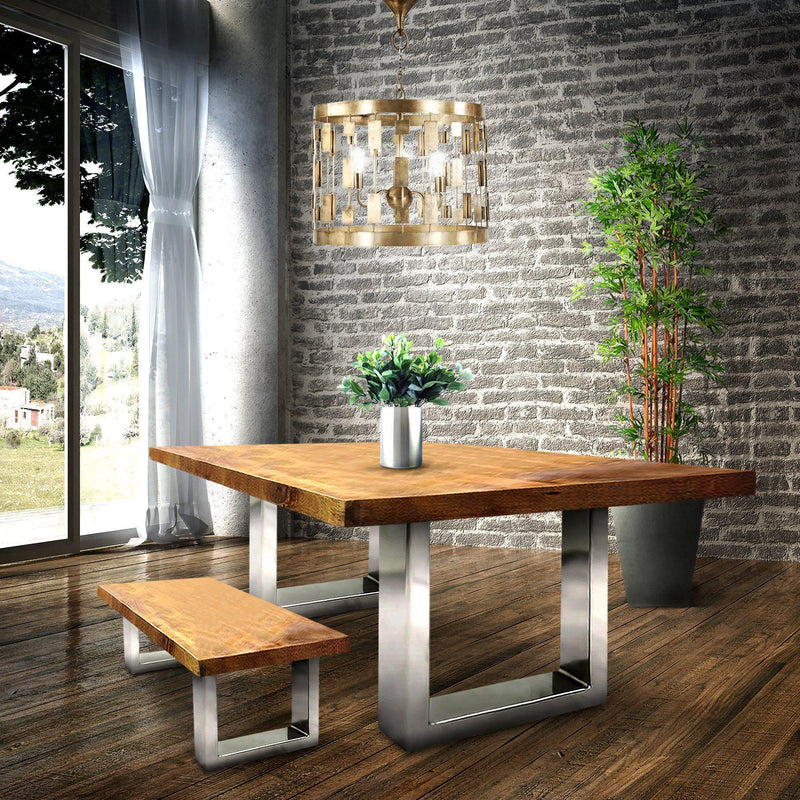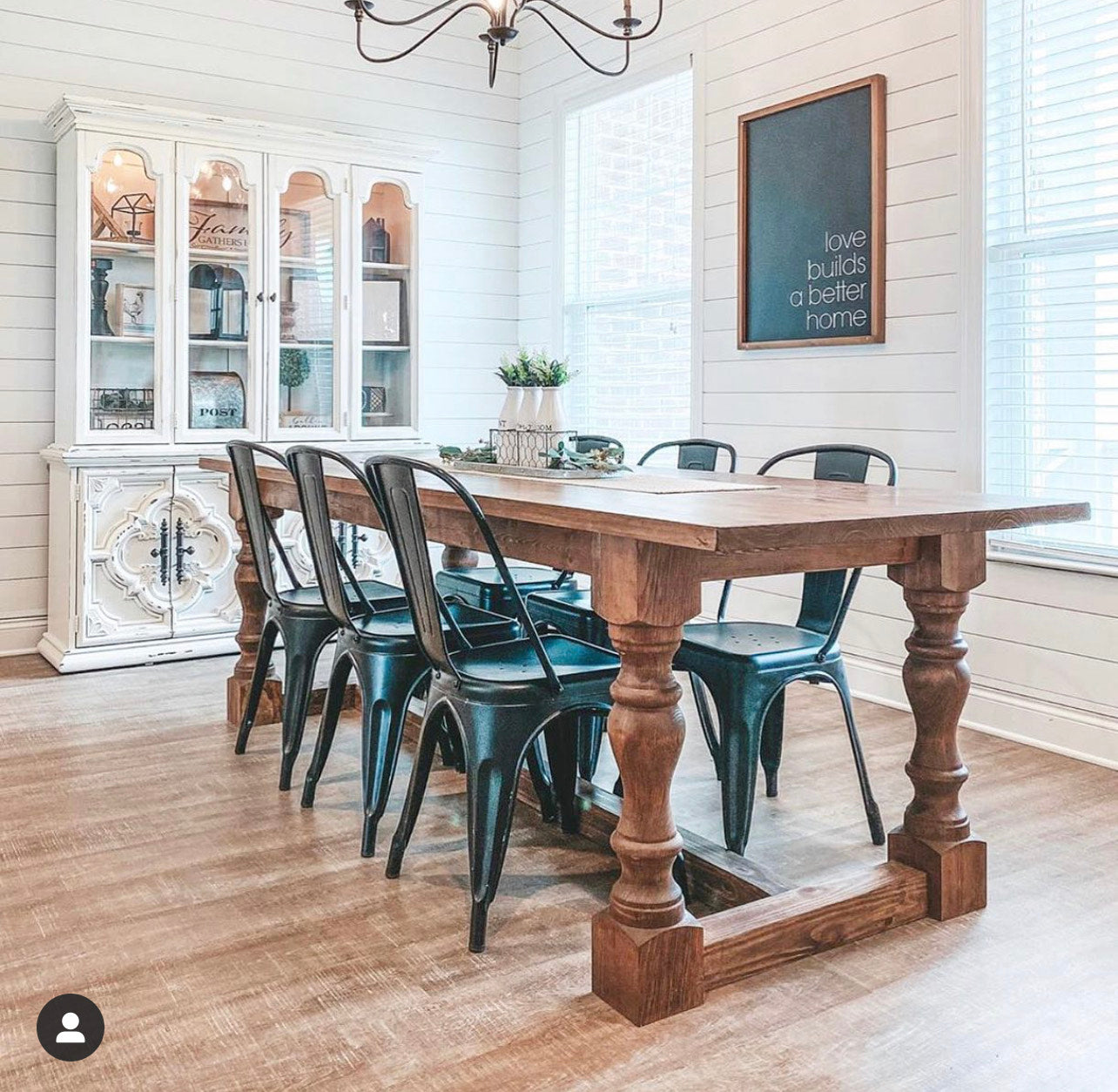Creative Ideas for Replacing or Refurbishing Your Dining Room Table Legs
Creative Ideas for Replacing or Refurbishing Your Dining Room Table Legs
Blog Article
From Typical to Modern: Find the Suitable Eating Area Table Legs for Your Style
The selection of dining space table legs plays a crucial function in defining the total personality of your room, connecting the gap between typical craftsmanship and contemporary appearances. While traditional styles such as cabriole and turned legs evoke a feeling of classic refinement, contemporary designs like hairpin and geometric choices provide a chance for striking visual passion. Reviewing the right equilibrium between these designs calls for a nuanced understanding of your existing decoration and personal preference. As you consider these elements, the concern continues to be: just how can you flawlessly integrate these diverse leg styles to produce a harmonious dining experience?
Understanding Table Leg Styles
The selection of dining-room table leg styles can significantly influence both the aesthetic appeals and performance of the room. Each leg design contributes special aesthetic elements and sensible features, providing to diverse design choices and usage requirements. Understanding these styles is vital for selecting the appropriate dining table that straightens with your overall indoor layout vision.
For example, conical legs provide a tidy, classic appearance that can boost a room's elegance, while stand bases provide security and make the most of legroom, making them suitable for smaller rooms. Hairpin legs, a trademark of mid-century modern-day style, introduce a commercial flair, enabling a ventilated, open feel. In a similar way, trestle legs evoke rustic beauty, offering durable assistance and a sense of timelessness.
Wooden legs can bring warmth and structure, whereas metal options typically convey a sleek, modern vibe. Eventually, understanding table leg styles is vital for creating a natural eating location that mirrors personal design while ensuring functionality and convenience.
Standard Table Leg Options
When picking dining room table legs, traditional choices commonly embody timeless elegance and craftsmanship. These styles show an abundant heritage and a commitment to quality, making them ideal for those that value traditional visual appeals.
One of one of the most renowned standard leg designs is the cabriole leg, defined by its elegant curved form. This layout typically includes ornamental carvings and is most typically found in Queen Anne and Chippendale furniture. An additional prominent option is the turned leg, which flaunts a series of smooth, rounded forms that offer a classic look while keeping security.
Moreover, the straight leg, while simple, uses a strong and unadorned structure that can blend effortlessly with a range of tabletop designs. For those drawn to ornate outlining, claw-and-ball feet legs stimulate a feeling of magnificence and can serve as a sensational centerpiece in any type of eating room.
Finally, pedestal bases, although not strictly legs, give a different conventional option that enables enough legroom and can be magnificently carved. Each of these conventional leg styles adds to the overall atmosphere of a dining-room, weding function with visual allure.

Modern Table Leg Designs
Modern table leg layouts supply a varied variety of designs that emphasize ingenious materials and tidy lines. These styles often focus on capability while working as striking prime focus within an eating space. Minimal appearances prevail, with legs crafted from materials such as metal, glass, and crafted wood, which contribute to a ventilated and modern feeling.
One preferred style is the hairpin leg, identified by its slim, tapered framework that provides security without overwhelming the discover here tabletop (dining room table legs). This style is frequently discovered in mid-century modern-day furnishings and can easily match numerous table forms. An additional fad is using geometric forms, where legs might take on angular or unbalanced forms, including visual rate of interest and a touch of creativity

Blending Styles for Unique Areas
Often, property owners seek to create one-of-a-kind dining areas that reflect their personal design by blending different layout elements. This technique permits for the consolidation of diverse aesthetic appeals, leading to an unified yet distinctive setting. For instance, matching a rustic wooden table with smooth, modern metal legs can develop an appealing comparison that raises the room's total charm.
Additionally, incorporating vintage table legs with modern table tops can stimulate a feeling of background while keeping a modern-day sensibility. web Such mixes not just display individual taste however likewise motivate creative thinking, permitting homeowners to curate an area that feels both personal and welcoming.
Shade plays a vital function in this blending process; selecting table legs that enhance or comparison with the existing color pattern can boost aesthetic interest. Whitewashed legs can soften the daring of a dark table surface area, developing a well balanced visual.
Tips for Choosing the Right Legs
Selecting the right table legs is vital for accomplishing both capability and visual charm in your eating space. Begin by thinking about the overall style of your area. Conventional setups gain from legs that include intricate makings or turned styles, while contemporary rooms might ask for smooth, minimalist designs.
Following, examine the elevation and stability of the legs. dining room table legs. Typical dining tables vary in between 28 to 30 inches in height, so guarantee the legs enhance this dimension for comfort. Furthermore, durable products, such as hardwood or steel, can enhance security and longevity
Assess the leg shape too-- options consist of straight, tapered, or stand layouts. Straight legs provide a classic appearance, while tapered legs can add a touch of sophistication. Pedestal bases offer enough legroom and are excellent for smaller spaces.
Verdict
In summary, choosing the suitable dining space table legs needs careful factor to consider of both contemporary and conventional styles. Conventional options such as cabriole and turned legs use ageless style, while contemporary designs like barrette and geometric forms offer a contemporary touch. By integrating leg design, height, and product with the general décor, a cohesive and welcoming ambience can be accomplished. Inevitably, the picked table legs must show the preferred visual, improving the eating experience within the area.
The range of dining space table check here leg designs can significantly affect both the visual appeals and capability of the room. Eventually, comprehending table leg designs is vital for creating a natural eating area that reflects personal design while ensuring usefulness and comfort.One of the most famous typical leg styles is the cabriole leg, defined by its stylish bent shape. Straight legs offer a traditional look, while tapered legs can include a touch of elegance.In recap, selecting the excellent dining area table legs calls for careful factor to consider of both standard and contemporary styles.
Report this page